Next year – 2020 – will be the 130th anniversary of the death of the great artist Vincent Van Gogh. Just in the last five years, huge swaths of the historicity of Van Gogh’s life story have been called into question, analysed and fine-tuned.
A few critical areas where we’ve seen significant shifts from the original story are in the way Van Gogh suffered a gunshot wound and died, as well as the Ear Narrative [how much ear was cut off, and the events surrounding that bloody incident].
Ironically, both these shifts apply directly to what one might call the True Crime Elements of the Van Gogh Mythology. The suicide narrative now feels more like a typical true crime scene, and the ear incident has a similar scenario now too also invoking motive, blood evidence, witnesses etc, in fact all those staples we associate with the true crime genre.
What this shows is that the history around Van Gogh is still changing, still evolving. As wildly famous as Van Gogh is today, one of the most expensive artists in the world, if you had to ask who murdered Van Gogh – and why – good luck getting a straight answers. Even expert historians can’t agree. Even the mainstream media and researchers dedicated to his life story can’t explain what really happened.
‘At Eternity’s Gate’ star, Willem Dafoe, says ‘history lied’ about Van Gogh – iol
New film claims Vincent van Gogh was murdered – Citizen
Van Gogh: it was suicide, not murder – The Art Newspaper
So when Willem Dafoe stepped forward for his role in At Eternity’s Gate I was looking forward to seeing the most modern rendition of the Van Gogh story; a retelling with all of the latest research spun together into something more cogent, coherent and authentic. That was the hope, the expectation.
Dafoe’s casting also meant the reach of this film would be greater, and so it was. After publishing The Murder of Vincent van Gogh, my book on the popular Dutch artist, in May 2018, I made Vincent van Gogh one of my Google alerts. It’s fair to say that I get more alerts on Van Gogh on a daily basis than for any of the other high-profile true crime cases on the list.
Around the world Van Gogh is not only popular but often top of mind. When manmade spaceships notice whirls of a certain kind on Jupiter, it reminds them of Van Gogh’s Starry Night. Van Gogh is as part and parcel of the modern zeitgeist as Christmas, the Oscars, Facebook and The Big Bang Theory. But how much of the popular mythology is even true?
New photos from Jupiter look like a van Gogh painting – CNN, February 2019
When psychologists and creatives try to unlock or fathom the keys to creativity, they turn to Van Gogh as both an example and a cautionary tale on how “madness” can inspire art.
World Bipolar Day: Honoring Van Gogh—Are Creativity and Madness Linked? – bphope
The real Van Gogh: A genius not driven by madness but crippled by it – BBC
Exploring Artistic Creativity And Its Link to Madness – The New York Times
If the suicide myth and the ear incident are two legs of the three-legged chair that is Van Gogh Lore, then the third leg is the myth of the man as a mad artist. In my book I investigated all three “legs”. I wanted to see how At Eternity’s Gate fared in handling these subjects.
Before dealing with the Good, Bag and Ugly of the film [ranked 6.9 on IMDb], let’s start with the name. At Eternity’s Gate is a giddy-sounding title for a rather different take by the great artist himself. Van Gogh painted various iterations of the same setup, an old man or woman bent over in despair beside a roaring hearth.
Since I knew the portent of the art, and since I’d seen the trailer, I sensed an immediate mismatch between the context of Van Gogh’s own words and sentiments [in terms of the specific “At Eternity’s Gate” artwork] and how the filmmaker was misinterpreting it.
Intuitively I was interested to watch this film but went in with low expectations. I was pleasantly surprised.
The Good
The film opens with a black screen, and Dafoe talking simply, humanly, yet profoundly as Van Gogh. It rings true and elements of his opening gambit, such as “I wish they would only take me as I am”, resonate with words written in Van Gogh’s letter to his brother Theo dated [15-27 April 1882].
So it’s a good start. Using the artist’s own words [and he wrote hundreds of letters in his life] is a smart way to achieve the authentic man through the authentic voice. It’s been done before, of course, in the excellent Painted with Words film starring Benedict Cumberbatch.

The first visual of the film is jarring – appropriately – throwing the viewer into a random farm field, and the artist approaching a maid leading a flock of sheep. He approaches her and asks her if her can sketch her. She’s confused by this and so are we.

The colors are washed-out and desaturated, which suggests Van Gogh hasn’t quite found his eye on his canvas just yet, and needs to start seeing the world – well – differently.
Jump to Paris and a difficult art crowd where Van Gogh still isn’t well-known and can’t sell a damn thing. There we encounter Paul Gauguin, an artist who is better known in 1888 than Van Gogh, and who’s having better luck selling his wares to the same crowd.
Even so, the two strike up an unlikely friendship. Naturally it doesn’t do Gauguin any harm that Vincent’s brother is an art dealer.

The next jump is to a windblown house in Arles, in the south of France. It’s cold, and Van Gogh – forced to stay indoors – is getting stir crazy. He removes his shoes and we’re offered a floor eye-view of his flea bitten socks with toes poking out of holes. This is far and away the most authentic moment in the whole film, because more than painting or writing letters, Van Gogh was a rambler. Every scene he painted he walked to, and he walked a lot. When he lived in London as a youth he rambled from London to Brighton, a distance of 53 miles. On another occasion he walked over 80 miles from London to Ramsgate.
It’s also the depiction of Van Gogh doing his thing that feels real. The glint of the oils on the palette, the sound of the brush lightly scratching on the canvas. The way the white canvas begins to fill up, almost magically, with those boots on the floor.

But this is where the first signs of trouble creep in. The boots are based on reality, and the photography isn’t a bad match for the painting. The problem is the art that is created on camera looks nothing like the painting Van Gogh executed, a detail one would expect more care and consideration in a biopic about a world famous artist and how he sees the world.
Since Willem Dafoe fancies himself as something of an artist, this may be license taken [or given by the director] to give him free reign to “interpret” Van Gogh. Well, fine, to each his own but as misinterpretations go, this one isn’t little. It’s also quite vulgar. It’s doesn’t look for feel anything like a Van Gogh you’ve ever seen, and that’s a problem.

It’s a shame, because the optics and atmosphere of everything else is just about right. It’s just the most important thing, how he looks and represents his boots on the floor that are misrepresented.
As a freelance photojournalist who wrote a series of articles on artists, and went out into the field to find the landscapes they painted [including of my own great grandfather, the Dutch artist Tinus de Jongh], I found this clumsy approach to Van Gogh’s work inaccurate and thus unacceptable.

Of the “three legs” to Van Gogh’s story, At Eternity’s Gate gets the most important part right – the lore. The basic stuff. The look and feel. To be fair, that shouldn’t be hard to do. It requires simply placing the artist where we know he was, and contextualizing the art we know he painted with real places. Incredibly, At Eternity’s Gate begins this process, but leaves out all the seminal works Van Gogh painted – from Starry Night painted at the asylum of St. Remy to Wheatfield with Crows, painted just prior to his death in Auvers.
Why?
The Bad
Of course, part of what the filmmaker was trying to demonstrate through his own photographic palette was the arc of Van Gogh’s psychology, and part of that arc was simply showing how the landscape [and the man] transformed and came to life, vividly and colorfully. It’s a great premise, but sadly the filmmaker executed on it poorly, that is to say, not very “artfully” or “creatively”.
An excellent artistic and creative telling of the story through Van Gogh’s art work is successfully achieved through Loving Vincent [ranked 7.9 on IMDb].
Not only is the animated version viscerally and visually authentic, it’s also narratively and factually a masterpiece. In fact it was Loving Vincent, and the detective-story-plot, that inspired me to investigate Van Gogh’s story as a possible true crime case, and it turned out it was.
‘At Eternity’s Gate’ Review: The Definitive Portrait of Vincent Van Gogh – Rolling Stone
Although the portrait of Van Gogh in this film has its moments, it’s not a definitive portrait, not even close. Many others have tried, many have failed, and a few have come closer, a lot closer than this film. Simon Schama’s Power of Art series [IMDb rating 8.6/10] is a credit to the Van Gogh story, even with the miscast Andy Serkins playing the tortured artist.
[vimeo 100156306 w=640 h=352]
As the Good Times reviewer Lisa Jensen put it:
But for all of Schnabel’s determined technique, nothing in his movie ever quite achieves the emotional clarity of a single Van Gogh painting.
One rather has the impression the filmmaker so hastily put together his film he forgot to actually study a painting and feel the artist’s own idiosyncratic message. In other words, what we’re seeing isn’t Van Gogh but Director Julian Schnabel’s Van Gogh.
The Ugly
At Eternity’s Gate Shows Us the Vincent van Gogh We Never Knew – Time
If only Schnabel had shown us the real Van Gogh, his movie would likely have one best picture, and possibly best actor. Perhaps someday if my book is turned into a movie that will happen [hey, crazier things have happened].
For me the worst part of the film was the final third, which deals with the seminal moments of Van Gogh’s life. My impression was that Schnabel read a few newspaper articles and excitedly, feverishly sticky taped them into his script.
The ear narrative is nicely woven into the film, especially the sketch of the ear by the doctor, and the “interview” with Van Gogh post mutilation. But this is where Schnabel exposes himself for failing to figure out his own story. As the ear narrative plays out the director finds himself unable to account for it. How did it happen? Why did it happen? Ah well, we’ll leave it the viewer to figure out.
Julian Schnabel Spent His Whole Life Preparing to Make His Most Personal Movie – IndieWire
And then we’re left with the biggest mystery of all. How Van Gogh was shot, and by whom? Once again Schnabel has taken a little information [that there’s evidence the wound wasn’t self-inflicted] and then ran with it.
Once again, he finds himself unable to account for the dialogue that must have followed this shooting incident in the little room where Van Gogh suffered for over 30 hours, and then died.

Here Schnabel walks out on his own story, providing a few seconds of screen time as a way to cheat the real questions haunting Van Gogh’s final hours. It’s the ultimate cop out, and the reason this film went out with a whimper amongst critics and audience alike, despite a tsunami of press and PR, and a top notch cast.

The biggest, most glaring omissions for me in the film was the absence of the word “syphilis” in the context of Van Gogh’s mental and physical health, or lack of. His brother, who died just 6 months after Van Gogh [of syphilis] is a picture of health in this story, another indication the director simply didn’t do rudimentary research, or think logically about his story.
A runner-up to the medical aspect is Van Gogh’s reputation as skirt chaser. There is virtually zero attempt to dramatize any of Van Gogh’s infamous dalliances, and as such, it’s no surprise that at the very end Schnabel’s story collapses in on itself.
So who killed Vincent van Gogh, where and why?
Great things are done by a series of small things brought together. – Vincent Van Gogh
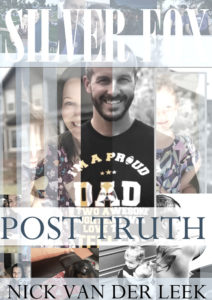
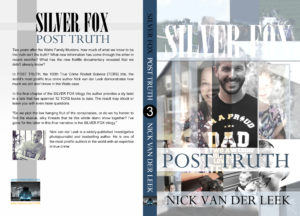


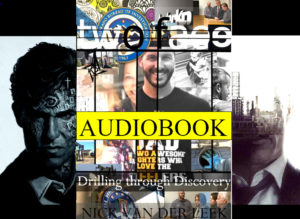
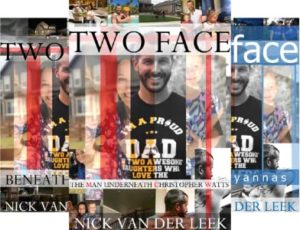

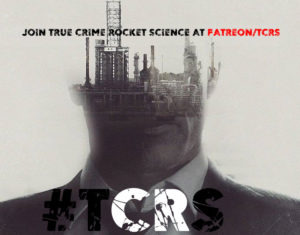

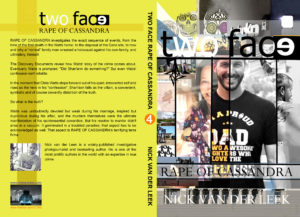
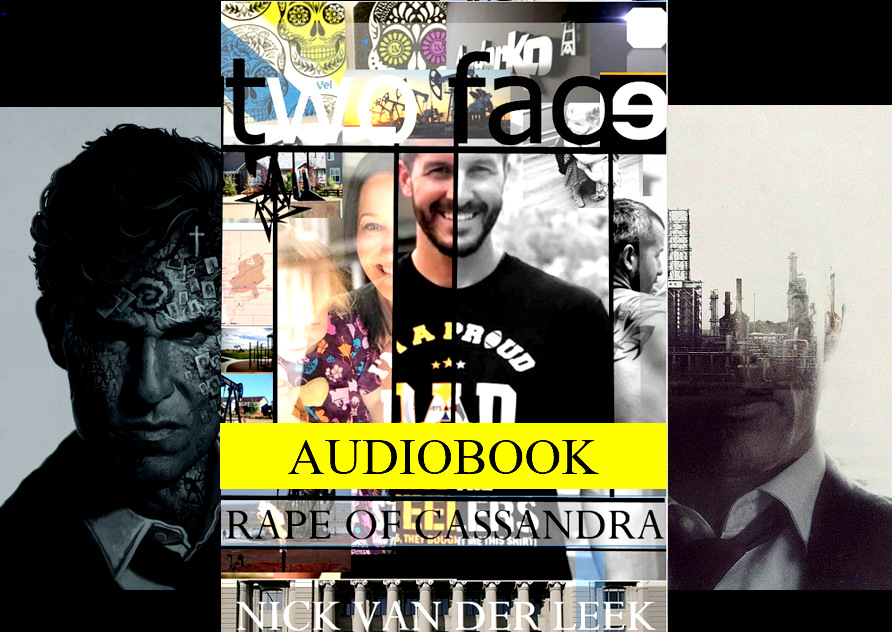
As I was reading through your post, I wondered if you would touch upon the movie “Loving Vincent.” As someone who rarely takes the time to watch movies, I chose this one recently and had planned to work (catching up on correspondences and such) while watching and, instead, found myself engrossed in the mastery of the movie, animation, and story. I’ve been looking forward to reading your book on Vincent Van Gogh but have wanted to learn a bit more about him before thinking I could understand the characters, motives, or possibilities surrounding his death. It’s been fascinating as I learn more about him! Don McLean’s “Vincent” has always been a favorite and evocative song inspiring a sentiment for the artist from a very young age.
Glad to mentioned that song, it’s a classic 😉
https://youtu.be/4wrNFDxCRzU
Oh, my goodness! Love, love LOVE! When I was a freshman in college, Don McLean was scheduled to perform in concert on campus. That concert date also happened to be my boyfriend-at-the-time’s birthday so, of course, I thought what better gift than tickets to see/hear one of my…erm…our favorite performers and dinner out afterwards. Something interrupted Mr. McLean’s travel that night and he ended up being about four hours late to show, but he did show and he didn’t disappoint! We never made it to dinner that night, much to the sadness of my poor starving date…but we did make it to the altar a few years after that!
Extremely interesting piece. I hope your book will become a movie, because you’ll do honor to Van Gogh. Am going to go read the book.
Your great grandfather’s artwork is incredible. Did you or your parents inherit any of his pieces? His way of actually painting light mesmerizes me – Maxfield Parrish has a similar style to sky light and I still scour antique shops for his old prints from the 30’s.
I first read that “did any of us inherit his art”…as in the talent to draw or paint.
My father is a gifted gardener and can sketch alright. I remember he once drew a cartoon to protest local urban development in a nature reserve and it was published in the local newspaper. Unfortunately the development went on regardless.
My brother is an engineer but worked for many years fulltime as a professional artist. If you do a Google image search for “Casey van der Leek” you can see some of them. Or look here:
https://www.straussart.co.za/auctions/lot/26-sep-2016/119#view
My Great grandfather’s son Gabriel also went on to make a name for himself as a famous South African artist.
https://www.straussart.co.za/artists/view/gabriel-de-jongh/live
https://www.straussart.co.za/artists/view/tinus-de-jongh/live
Personally I prefer my aunt’s work, of all the artists in our family.
https://www.capegallery.co.za/joan_schrauwen1.htm
I enjoy drawing, but feel I paint better what I’m trying to convey with words 😉 But because of my connection to real art and real artists, I think I have an intuitive understanding of Van Gogh that many other storytellers lack. No one has *quite* mastered telling Van Gogh’s story, yet.
Do you know if your aunt’s painting entitled “Blossoms” is of apple blossoms? It’s stunning!
btw…I immediately laughed at myself after I asked the question. If she cares to know, please share with her sometime that someone saw apple or, perhaps, pear blossoms in her gorgeous interpretation and was reminded of something very special. 😊
Funny, I started with the assumption that the talent would be inter-generational to a certain degree. I’ve been asked that question too many times to count through the years – a bit annoying after awhile too.
My grandfather said it’s in Dutch blood to create – he made that up I think, idk- just his way of interpreting that trait trailing down through multiple generations.His thing was creating intricate, beautiful butter sculptures before large family gatherings down on the farm. My brother, a lifelong artist, sometimes wakes in the middle of the night to start a new painting before forgetting whatever vision he had in his dream. Once when an art collector had his home burglarized the thieves chose to take the large, hard-to-carry Latin Flamingo Dancer (along with the tv) when there were so many smaller, extremely valuable pieces to take. It still amuses me that my brother considered that to be the highest form of flattery – not that a wealthy collector thought his pieces would appreciate in value. Artists personalities are often as colorful and complex as their art. Pretty interesting characters to interpret ,I think.
Glad you shared about your family. Your brother seemingly channels your great grandfather through his art. Uncanny, right? If inter-generational trauma is real, perhaps there are other behavioral connections to our ancestors yet to be discovered. In our DNA or something. It’s sorta a fun area to explore. You do, as you know, have a leg up in writing about van Gohg -another complex artist to figure out You’re really fortunate to come from a family where creative expression is encouraged – it’s not considered practical skill in many families. Great writers are most certainly an extension of those values.
Just bought the book – can’t wait to start reading!
Well, don’t laugh but creative expression *isn’t* encouraged in my family. Some folks are not too happy about my profession.
Be sure to share some of your impressions as you read along. I do feel strongly though that the Dutch are more enterprising and perhaps more eccentric than most folk, in part because they have had to be. That’s in the MofVvG too.
I wanted to add that your great grandfather being a famous South African landscape artist speaks loudly to your ability to write so poetically and transcendently (in addition to you and your brother’s talent in art and photography) .
Good ‘ol Dutch genetics at play with a touch of soul added in for good measure, I’d say.
Indeed!
I absolutely *love* EVERYTHING you have written about Van Gogh. It’s one of my guilty pleasures.
My late father loved the Dutch artists, and in the short time we had together before his early death when I was only twelve, he tried to expose me to as much as my brief summer visits to him in New York would permit. One of the last gifts he ever gave me was a small wooden jewelry box, with a Vermeer print on the lid. I still have it.
Great article! I’m going to reread more in depth when my day’s tasks are completed and I can exhale. Thank you.
Well I have learnt some new things today, what a fabulous article Nick! I didn’t know much about Van Gogh. What I do know is that it’s widely talked about how he suffered vertigo or possibly Ménière’s disease. One day when I was breastfeeding my son I was struck down with dizziness and it never went away. 5 years later it’s still here and I found out it’s vestibular migraines. One of the first things I read was that Van Gogh was likely a fellow sufferer. I guess you can see it in some of his paintings. I wonder if we would see those very familiar brush strokes if he didn’t come down with the horrid dizziness
I think Van Gogh’s art touches people on a deep spiritual level, it reaches the soul. He truly was masterful in his interpretation of light, how light plays with a wheat field or illuminates the faces of potato eaters from a single lantern hanging over a table in an otherwise dark cave-like room. This was before Van Gogh’s work became more painterly, using thick strokes of the oil paint with brush on canvas. And no less brilliant capturing light on a flower or how stars swirl in the sky on a starry night.
I purchased “At Eternity’s Gate” last year and liked Willem Dafoe’s characterization but preferred Kirk Douglas in “Lust for Life.” Kirk Douglas just seemed more “invested” if that’s the right word. More determined to portray Van Gogh as passionate, determined, and aggressive than wounded, misunderstood, and overly-sensitive, as I thought Willem Dafoe characterized him. Aren’t all artists a little mad? Clifford Still didn’t want his art shown, or critiqued (after he died his wife did indeed share his work with the world hundreds of canvasses crowding their small home poked under the beds, stacked against the walls). Mark Rothko returned the money paid to him for a commissioned piece he decided should not be hung in a restaurant, and after years of painting killed himself in his kitchen, depressed over a divorce, plus years of chain smoking-related health problems and heavy drinking. To make a living as an artist is a very insular type of life and sometimes you are at the mercy of a fickle audience that doesn’t understand your work, can’t get the passion behind it, think they can do better but won’t prove it. But wow, what a life – to be able to create something that gives other people joy, inspires, moves, and touches them deeply is a life well lived.
to make a living as an artist is a very insular type of life and sometimes you are at the mercy of a fickle audience that doesn’t understand your work>>>Ain’t that the truth.
Did you know that Thomas Kincade absolutely abhorred his paintings of little cottages in the woods in all seasons, that show up on coffee mugs, t shirts, what have you. But he acquired an agent early on, who told him it was his cottages that would sell, not his abstract paintings that he much preferred to do. He drank himself to death. Van Gogh did what he wanted to do, and there is a very real honest nobility in that.
Those are too words that I think describe him very well – honest and noble. I would add humble to that.
Have you ever thought of selling your book jacket covers – on glossy paper stock, poster size suitable for framing?
No but now that you mention it I guess it’s something one could do on Patreon.
I can’t remember when I saw Lust for Life. But my mother was very interested in Vincent Van Gogh, and I tended to believe whatever my mother thought at the time, and most likely the two of us went to see Lust for Life at the movie theater. My mother and I shared a passion for movies and art. It’s only now, thanks to your book and investigation skills that I no longer think Van Gogh killed himself, or that he was mad. He was an artist. He was different. Is everyone who is different, mad? And why would he choose death by gunshot wound to the stomach? That is a slow and tortuous way to go. It’s a slow death, and didn’t he go lie down and spend days in his bed before he died? There’s something else about taking a shot to the stomach and then going and lying down. Doesn’t it seem there may have been some shame involved? Not shame over what he had supposedly done to himself but shame surrounding the events connected to the shot to his stomach. Otherwise why just take to his bed, why not go screaming into the streets “I’ve been shot!” That’s just my perception, without re-reading the book again.
Some good points. As you point out, why would he choose death by gunshot wound to the stomach? For someone who is already in anguish and agony, why make it even worse – deliberately?
Btw here’s my latest video on Van Gogh in case you missed it:
https://youtu.be/pZGLDpoRzas
Yes, thank you. If Van Gogh had died in the 1970’s we would have called him a manic depressive or paranoid schizophrenic. If he died in the 1990’s we would have said he was bipolar. If he died a few years ago we would have said he had a personality disorder with narcissistic tendencies.
That was really nice what you said in the youtube video – “seeing something beautifully profound in the ordinary.”
Andy Warhol was also shot in the stomach. By a mentally deranged fan. Surgeons were able to repair the damage, he lived, but later on died of complications from the gunshot wound. I’m wondering if Van Gogh didn’t take his gunshot wound in a similar fashion. Andy said something like “I think I’ve been shot” and told the woman to just leave – she fired off a few more shots at others – and when the dust cleared Andy was taken to the hospital where he did die but was brought back to life. I’m trying to think of the mentality that would have Van Gogh just go to bed after being shot, but in some ways it’s like Andy Warhol who said it didn’t seem real, like it was happening to someone else.
That’s fascinating. And I think you’re strangely right – I think Van Gogh was shot [murdered] by a deranged fan. Now who could that be? Hmmm…
Hmmm indeed. Do you see the element of shame I mentioned before? It’s not shame necessarily over anything the artist did, it’s the shame in being shot. Someone hates your guts, literally.
For sure. I think if he felt shame it was for or on behalf of his family. I’m sure he felt pretty embarrassed too, if that’s the right word.
There is an episode in the TV show “Mad Men” where one of the characters, Ginsberg, a highly skilled advertising writer began to have a mental breakdown. He began to have thoughts that the newly installed computer in the office might be transmitting messages to him and poisoning his body. He cut out his nipple one day and wrapped it up in a little box with a bow on it and presented it to his co-worker, Peggy, who was shocked and horrified. To him he had removed the part of his body that the computer had infected but why he gave it to Peggy wasn’t clear. Maybe to make a point – “they are trying to get to us.” And it’s just as unclear why Vincent might want to give a piece of his ear to the woman. Peggy had nothing to do with Ginsberg’s thoughts, just as the woman who Vincent gave his ear to didn’t either. I’m sure as Vince Gilligan wrote Mad Men he must have been thinking of Van Gogh.
It may have been a warning to Gauguin, that he spoken to a witness, or it may have been because they’d both been fighting about the same woman, and he gave it to her in a kind of irony, as if to say thanks for all the drama, thanks a lot.
Oh damn, not Vince Gilligan, Matt Weiner. correction
Oh I like that explanation! I think the common thought that Van Gogh was “mad” is just off the mark. When you read accounts of Gauguin’s life he was always running off and leaving people. Or being given the boot. His wife kicked him out of the house and the Tahitians had enough of him too, then he had this way of coming back and getting thrown out again. Talk about arrogant and difficult to live with.
I found it offensive the way Schnabel portrayed the artist Jean Michel Basquiat and Andy Warhol in his movie “Basquiat” (1996). David Bowie said he prepared for the role of Warhol by imitating his mannerisms. Aren’t we more than our mannerisms? Andy’s “swish act” was just that, an act. Who Warhol was was a very hard worker, who assessed the market and his own marketability at the time, who was shrewd, most definitely an introvert, who loved being surrounded by oddballs because he found them more interesting than the people he had to do business with in order to succeed. As for Basquiat, I’m still learning about him, but he was much more than the “enfant terrible” drug addict that has been associated with him, and he was actually a very beautiful trend-setting man who made himself the art. His frustrations were with the art world, who paid him thousands of dollars for a painting but often took his art before he had finished it. I honestly don’t trust filmmakers to ever get it right, and when they do, I’m surprised.
I tried, and I say tried, to watch At Eternity’s Gate again last night. I truly could not get through it. And it’s the same reason as the first time I watched it. It’s sad, morose, depressing – the misunderstood artist who feels so intensely no one can get him. I will not pity Van Gogh. All artists must work out how others perceive them and their art as they travel through life. Vincent Van Gogh at least had the power to look at himself and what he was doing in life, through his paintings. I also think his self portrait of his ear bandaged around his head could have been a little jab at the community – sort of like here I am intact, here I am without my ear as if to say what do you think of me now? One could say Gauguin’s paintings of a yellow Christ hanging on a cross could have been symbolic of how Gauguin felt about himself – crucified for what he wanted to do and how he wanted to do it. Yet we don’t pity Gauguin. Is it because he had a tough exterior? I think we can’t even imagine just how tough Van Gogh must have been, right on up to the end.
I believe it’s Julian Schnabel who has painted some of the Van Gogh’s paintings in At Eternity’s Gate. He says so in an article. He filmed Dafoe holding a brush or using a particular color but it was Schnabel’s paintings. So that is why you might have found some of the work vulgar as you said, because if you don’t care for Schnabel, you won’t care for the art he did pretending them to be a Van Gogh.
Now I do agree (with myself :)) I don’t care for Schnabel. In fact when he filmed “Basquiat” he as much as said Jean Michel’s father would not release a single painting so he had to paint a few himself. I am somewhat of an art and film snob, so don’t necessarily listen to me, but either you are going for accuracy, total accuracy, or you are making a fictional representation of the real thing. It might be helpful before such a film to announce “Disclaimer: filmmaker’s interpretation, including all art.”
There are films that have captured a particular artist with great accuracy in my opinion. Paul Dano in “Love and Mercies”, Ashton Kutcher in “Jobs” (not Michael Fassbender’s portrayal) and the Gus Van Sant film “Elephant” as well as “Last Days.” Van Sant captures the mood accurately of both Harris and Klebold strolling brazenly down the hall of the Columbine school randomly shooting anything that moves, and Kurt Cobain in Last Days.
Other ear incidents – Charles Manson sliced a piece of Gary Hinman’s ear off with his sword. Hinman was later killed. Mike Tyson bit off Evander Holyfield’s ear during a boxing match. The cutting of someone’s ear says more about the sanity of the avenger, the perpetrator, than the victim. I don’t think Van Gogh went through the absolute pain of slicing off his ear. Why would he? I’m really into your Van Gogh conversations on youtube. It’s such a full fledged education for me, it’s true crime, but it’s also history and art history and myth busting I’m just so into it. Thanks.
Glad you’re following it Sylvester, and finding it interesting. That’s a fascinating insight into Manson; not sure I knew about that.
When you mentioned Gauguin having a sword it triggered the memory.